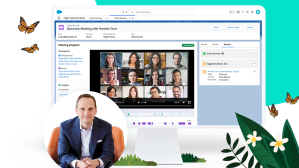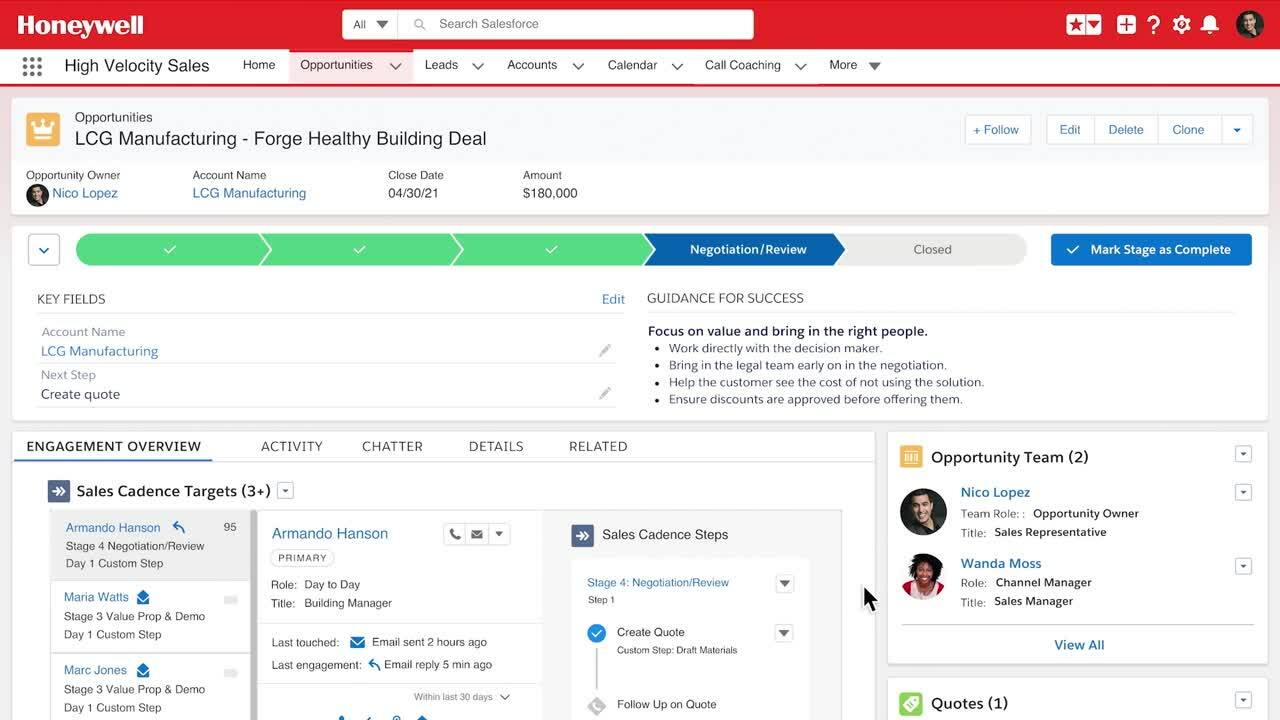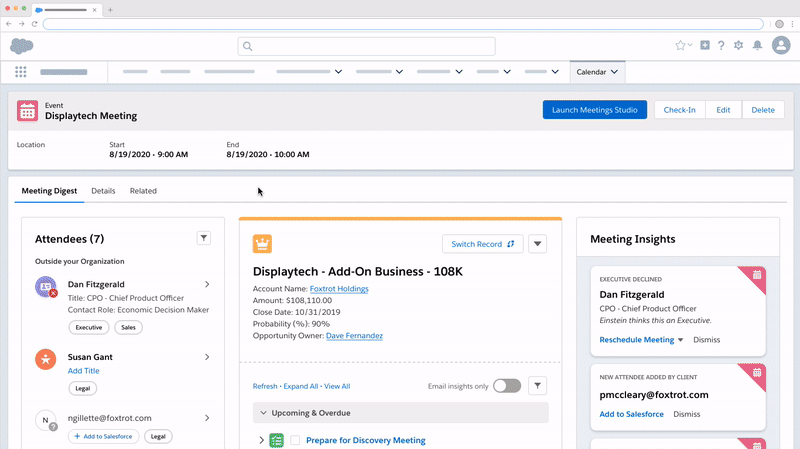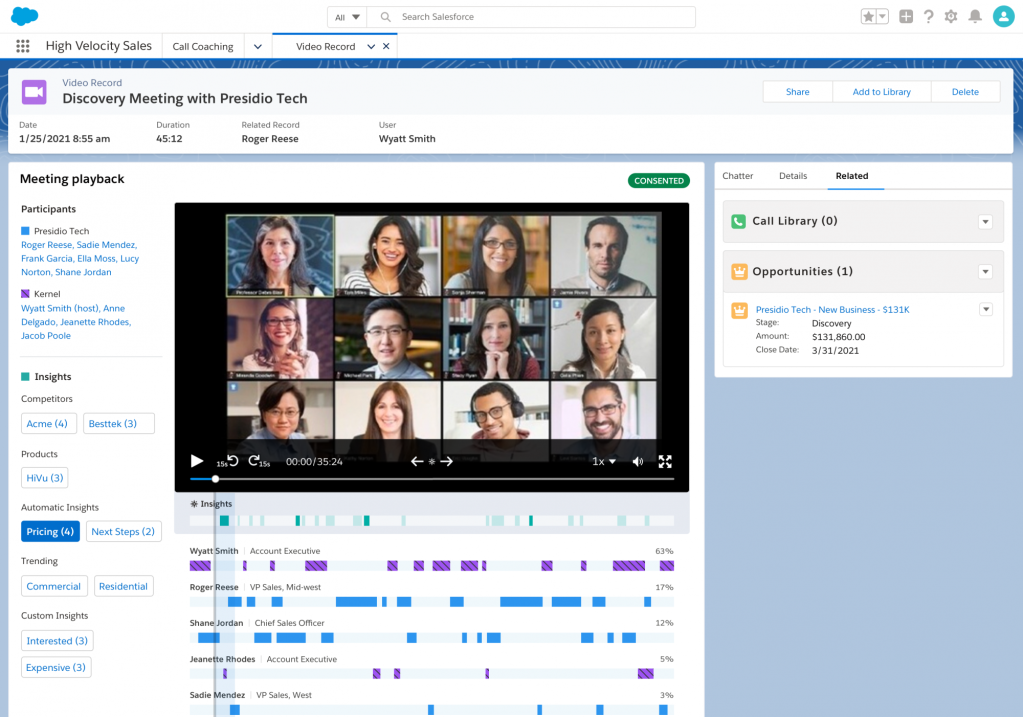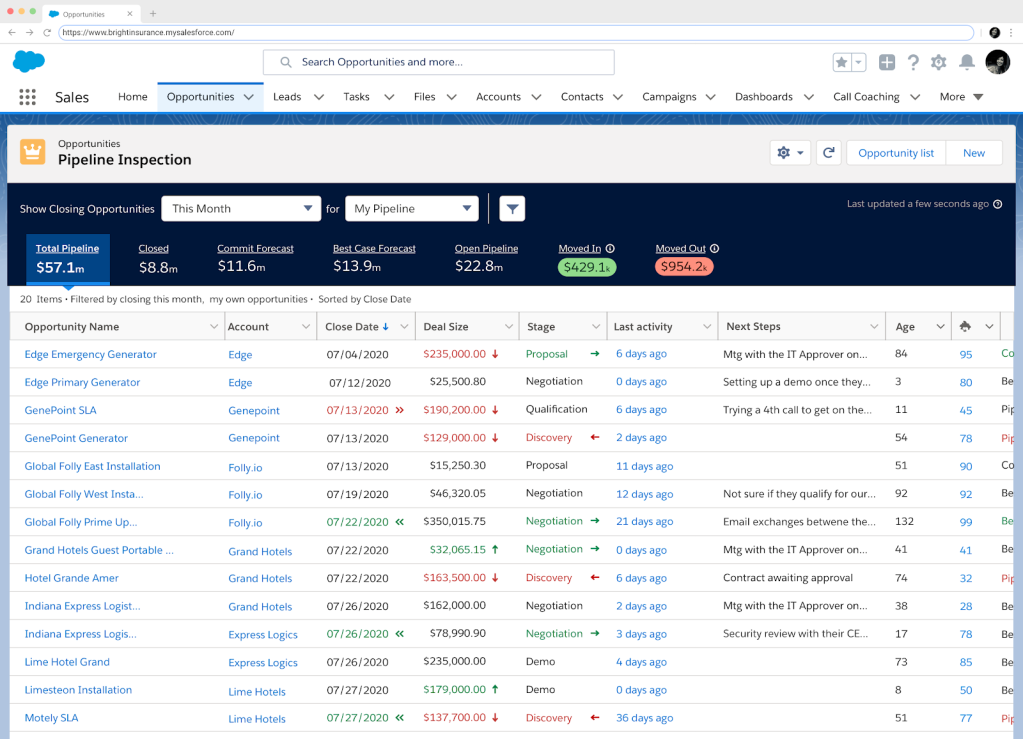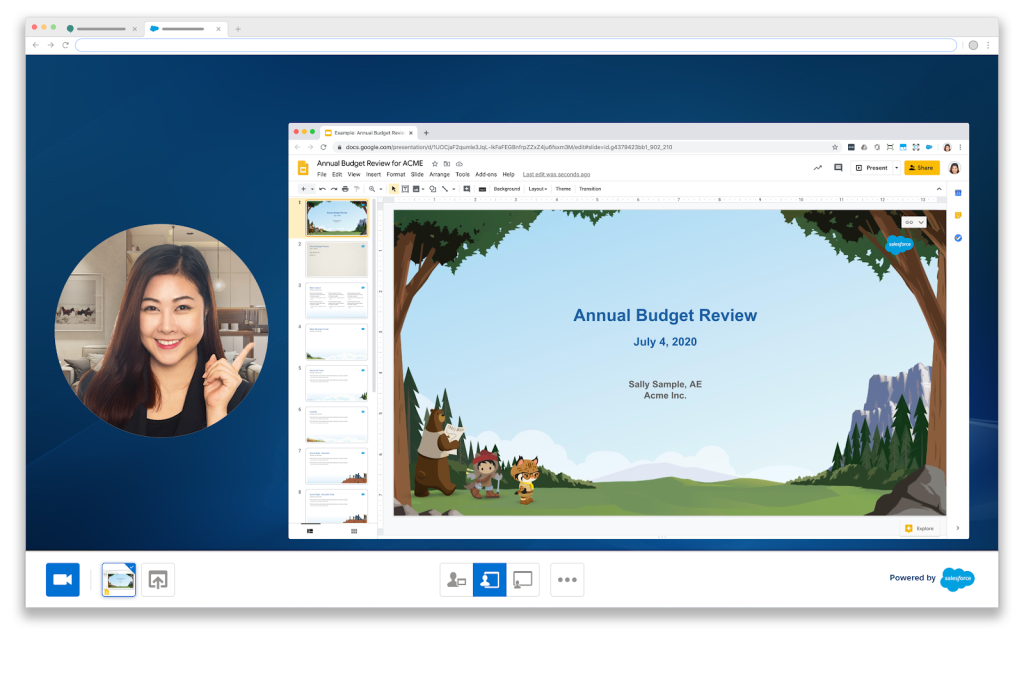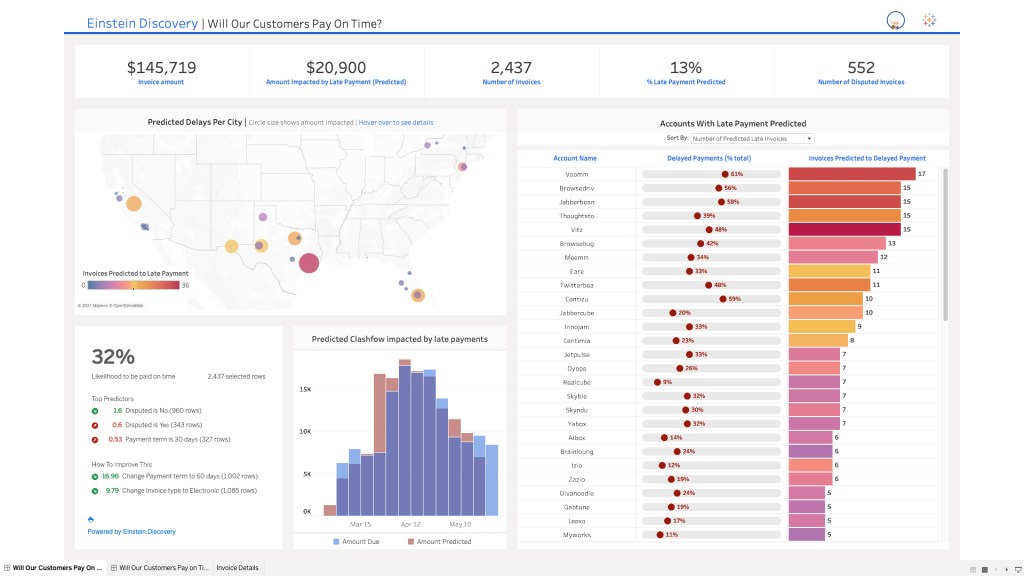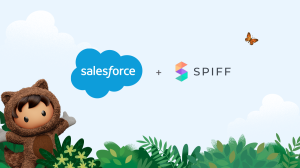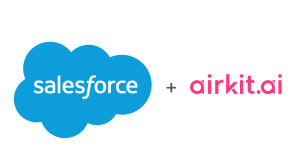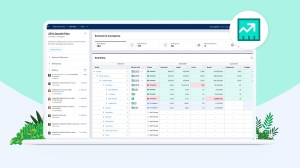When Warren Wick joined Salesforce nearly 20 years ago, he never could have imagined what the next two decades had in store: sales roles building world-class teams, relationships with the world’s best-known brands, and of course, a complete transformation to an all-digital, success-from-anywhere world.
Today, Wick serves as Salesforce’s EVP of Amer Commercial Sales and Sales Cloud CRO, a new role that gives him a front row seat to the evolution of both the sales profession, and the Sales Cloud product he now helps to run.
As the next generation of Sales Cloud launches, we spoke to him about the evolution of sales, of Sales Cloud, and the new challenges and opportunities for salespeople in the post-pandemic world.
Q: You’ve been with Salesforce since 2002. How has sales changed in that time?
Over the last almost 20 years, Sales Cloud has transformed from a sales force automation solution — a way to digitize your rolodex — to a selling platform with automation and artificial intelligence and a massive partner ecosystem.
Obviously, the world has gotten a whole lot more complex since then, and Sales Cloud has become a lot more powerful.
“We know deals today are won on video, so we’ve used AI to help ID cues and give sales people more information to understand those customers, get closer, and provide a better experience.”
Warren Wick, EVP of Amer Commercial Sales and Sales Cloud CRO, Salesforce
Sales leaders nowadays face unprecedented challenges. Customers are behaving differently — they expect sales and support to be one joined up experience. Sales people are having to adapt to virtual selling — there’s no more flying across the country to meet in person. And for a sales person who relies on understanding their customers, losing the huge amounts of information you get when talking in-person — from body language to understanding who the unseen decision makers are — is a challenge.
Q: How has Sales Cloud evolved to meet the changing needs of the sales professional?
Right now, CEOs are figuring out how to get back to growth after a really challenging, scary year. We’ve been working to build a Sales Cloud that measures up to those challenges, and that’s why we’re so excited about last week’s announcement.
Look at something like virtual selling. We know deals today are won on video, so we’ve used AI to help ID cues and give sales people more information to understand those customers, get closer, and provide a better experience.
You can see clearly that our customers have been using the product differently. Just look at Honeywell — the company has integrated sales, service, and data together, so that sales teams have better visibility into the accounts they manage. Sales Cloud helped their teams to work from anywhere and still stay on top of customer relationships without the daily interactions employees were used to.
Q: What does it take to build successful sales organizations in this new normal?
Sales are driven by how well you understand the problems your customers are facing and how you can help solve them.
Two of the critical factors in that equation, empathy and relevance, are finally getting the attention they deserve in sales. It shouldn’t have been a pandemic that made those human-first factors so critical, but they’ll be necessary from here on out.
“Sales are driven by how well you understand the problems your customers are facing and how you can help solve them.”
Warren Wick, Chief Revenue Officer of Sales Cloud, Salesforce
Our One Million Calls challenge really brought this to life. At the beginning of the pandemic, Salesforce set out to connect with our customers to understand how they were feeling, what they were facing, and how we could help.
These conversations weren’t just product or business focused — for example, we listened to the challenges parents were facing as they learned to homeschool their kids. Those broader discussions gave us a far deeper understanding of how our customers’ lives were changing during such a crazy time.
We then put that understanding to good use in upgrading and evolving our products. That’s why we’ve developed features for managers to aid in coaching and building relationships with their team, for instance — it came from the challenges we heard leaders faced when managing teams virtually.
Q: We’re hearing a lot about Cloud 3.0. How does Sales Cloud help salespeople adjust to the challenges and opportunities of Cloud 3.0?
Cloud 3.0 is the third era of technology that we’ve witnessed over the last couple of decades. Cloud 1.0 was about the internet, Cloud 2.0 was social and mobile. Cloud 3.0 is predicated on this idea that we are all working from anywhere now — and tools like Slack, Zoom and Salesforce are helping us work across time zones and locations.
For sales, Cloud 3.0 can mean connecting with your customers and partners in Slack to collaborate. You can use Zoom to connect more spontaneously with busy executives rather than schedule a day-long meeting weeks in the future. An account executive can send a contract over with a recorded video explanation so that the customer can review it on their own time, without scheduling a meeting.
The next generation of Sales Cloud is designed to help our customers enter Cloud 3.0. Tools like Pipeline Inspection, which help managers see changes in pipeline week by week, and Einstein Conversation Insights, which visualizes trends happening in video and voice calls, give sales teams the tools to collaborate remotely and succeed from anywhere. Combined, these tools give managers a new way to coach and guide their teams in this new hybrid world.
For more information about how Sales Cloud is evolving for the future of Sales, read the press release here.
Forward-Looking Statements
This communication relates to a proposed business combination transaction between salesforce.com, inc. (“Salesforce”) and Slack Technologies, Inc. (“Slack”). This communication includes forward-looking statements within the meaning of Section 27A of the Securities Act of 1933 and Section 21E of the Securities Exchange Act of 1934. Forward-looking statements relate to future events and anticipated results of operations, business strategies, the anticipated benefits of the proposed transaction, the anticipated impact of the proposed transaction on the combined company’s business and future financial and operating results, the expected amount and timing of synergies from the proposed transaction, the anticipated closing date for the proposed transaction and other aspects of our operations or operating results. These forward-looking statements generally can be identified by phrases such as “will,” “expects,” “anticipates,” “foresees,” “forecasts,” “estimates” or other words or phrases of similar import. It is uncertain whether any of the events anticipated by the forward-looking statements will transpire or occur, or if any of them do, what impact they will have on the results of operations and financial condition of the combined companies or the price of Salesforce’s or Slack’s stock. These forward-looking statements involve certain risks and uncertainties, many of which are beyond the parties’ control, that could cause actual results to differ materially from those indicated in such forward-looking statements, including but not limited to: the impact of public health crises, such as pandemics (including coronavirus (COVID-19)) and epidemics and any related company or government policies and actions to protect the health and safety of individuals or government policies or actions to maintain the functioning of national or global economies and markets; the effect of the announcement of the merger on the ability of Salesforce or Slack to retain and hire key personnel and maintain relationships with customers, suppliers and others with whom Salesforce or Slack do business, or on Salesforce’s or Slack’s operating results and business generally; risks that the merger disrupts current plans and operations and the potential difficulties in employee retention as a result of the merger; the outcome of any legal proceedings related to the merger; the ability of the parties to consummate the proposed transaction on a timely basis or at all; the satisfaction of the conditions precedent to consummation of the proposed transaction, including the ability to secure regulatory approvals on the terms expected, at all or in a timely manner; the ability of Salesforce to successfully integrate Slack’s operations; the ability of Salesforce to implement its plans, forecasts and other expectations with respect to Salesforce’s business after the completion of the transaction and realize expected synergies; and business disruption following the merger. These risks, as well as other risks related to the proposed transaction, are included in the registration statement on Form S-4 (as amended, the “Registration Statement”) that was filed by Salesforce with the Securities and Exchange Commission (“SEC”) and declared effective by the SEC on January 29, 2021, the prospectus that was filed by Salesforce with the SEC on January 29, 2021 (the “Prospectus”) and the definitive proxy statement that was filed by Slack with the SEC on January 29, 2021 (the “Proxy Statement”). While the list of factors presented here is, and the list of factors presented in the Registration Statement, Prospectus or Proxy Statement are, considered representative, no such list should be considered to be a complete statement of all potential risks and uncertainties. For additional information about other factors that could cause actual results to differ materially from those described in the forward-looking statements, please refer to Salesforce’s and Slack’s respective periodic reports and other filings with the SEC, including the risk factors identified in Salesforce’s and Slack’s most recent Quarterly Reports on Form 10-Q and Annual Reports on Form 10-K. The forward-looking statements included in this communication are made only as of the date hereof. Neither Salesforce nor Slack undertakes any obligation to update any forward-looking statements to reflect subsequent events or circumstances, except as required by law.
No Offer or Solicitation
This communication is not intended to and shall not constitute an offer to buy or sell or the solicitation of an offer to buy or sell any securities, nor shall there be any sale of securities in any jurisdiction in which such offer, solicitation or sale would be unlawful prior to registration or qualification under the securities laws of any such jurisdiction. No offering of securities shall be made, except by means of a prospectus meeting the requirements of Section 10 of the U.S. Securities Act of 1933, as amended.
Additional Information about the Merger and Where to Find It
In connection with the proposed transaction, Salesforce filed with the SEC the Registration Statement and the Prospectus, and Slack filed with the SEC the Proxy Statement. The Registration was declared effective on January 29, 2021 and the Prospectus and the Proxy Statement were first mailed to shareholders of Slack on or about January 29, 2021. Each of Salesforce and Slack may also file other relevant documents with the SEC regarding the proposed transaction. The information in the Prospectus and Proxy Statement may be changed. This document is not a substitute for the Registration Statement, the Prospectus and the Proxy Statement or any other document that Salesforce or Slack may file with the SEC. INVESTORS AND SECURITY HOLDERS ARE URGED TO READ THE REGISTRATION STATEMENT, THE PROSPECTUS AND THE PROXY STATEMENT AND ANY OTHER RELEVANT DOCUMENTS THAT MAY BE FILED WITH THE SEC, AS WELL AS ANY AMENDMENTS OR SUPPLEMENTS TO THESE DOCUMENTS, CAREFULLY AND IN THEIR ENTIRETY BECAUSE THEY CONTAIN OR WILL CONTAIN IMPORTANT INFORMATION ABOUT THE PROPOSED TRANSACTION. Investors and security holders are able to obtain free copies of the Registration Statement, the Prospectus and the Proxy Statement and all other documents containing important information about Salesforce, Slack and the proposed transaction, once such documents are filed with the SEC, through the website maintained by the SEC at http://www.sec.gov. Copies of the documents filed with the SEC by Salesforce may be obtained free of charge on Salesforce’s website at http://www.salesforce.com/investor or by contacting Salesforce’s Investor Relations department at investor@salesforce.com. Copies of the documents filed with the SEC by Slack may be obtained free of charge on Slack’s website at investor.slackhq.com or by contacting Slack’s Investor Relations department at ir@slack.com.
